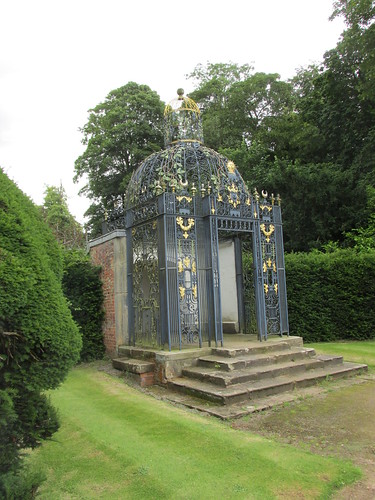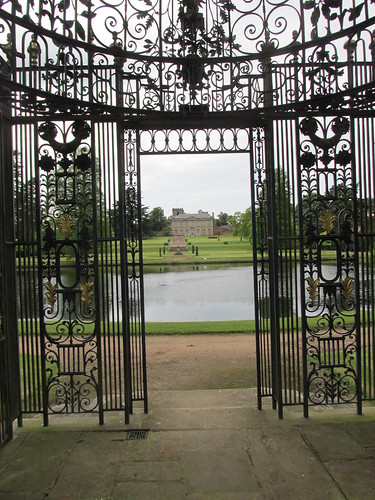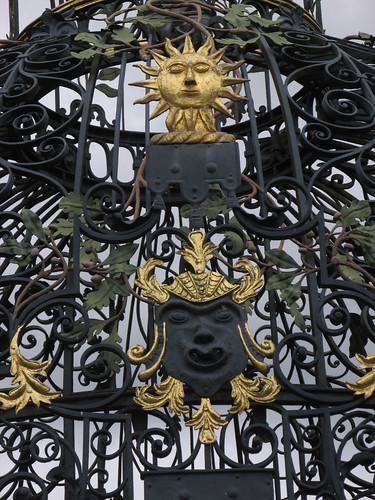 |
| The Birdcage Arbour |
One of the reasons so few people have heard of it is because it's not open very often. Weekends and Wednesdays, April to September, with occasional extra days in August. and then only for four hours at a time. I live five miles from it and it's taken me 10 years to get there. I tried a few weeks ago but there was a blackboard at the entrance with "Gardens closed. Flood." chalked on it. Second attempt was more successful.
For anyone who bothers to check, Melbourne Hall has one of the most unspoiled gardens of its era - the very early 18th century. The original design was drawn up in 1704, but it was already becoming out of date by the time it was finished a couple of decades later. The likes of Lancelot "Capability" Brown and his ilk were doing away with the French style of geometric ponds, regimented lawns, classical statuary and long vistas by the 1730s, to make way for a more 'natural look'. (Of course their kind of nature frequently required re-routing streams and rivers, and the removal of whole villages if they spoiled the view. A most unnatural form of nature.)
 |
| Looking up through the dome |
 |
| The view back to the house |
It's packed full of statuary, almost all of which is listed Grade I, but its crowning glory is undoubtedly its Birdcage Arbour, which stands by the pond at the southern end of the garden. It's exquisite. It was designed and built by local blacksmith Robert Bakewell and is extremely ornate wrought iron, topped with a cupola rising to a tall finial. It is decorated with leaves and scrolls, caricature faces and sun disks. Bakewell was paid the then princely sum of £120 for his work, but its production left him penniless. However, it vastly increased his reputation and he managed to find other work in and around Derbyshire, including the chancel screens at Derby cathedral and Staunton Harold church.
And how did Melbourne pass on its name to the Down Under town?
Well, in the mid 19th century it was the home of William Lamb, 2nd Viscount Melbourne and Prime Minister of the UK. It was named in 1837 by Governor Sir Richard Bourke to honour him. Clearly the scandal caused by his wife Lady Caroline's affair with the poet Byron in 1812 had been forgotten by that time. A week is a long time in politics, as they say. Twenty five years is obviously even longer!


How beautiful, so delicate. I will have to track the house down on-line.:-)
ReplyDeleteI rememebr taking a friend there on our way back to Spalding in Lincolnshire from here. I remember going inside the hall but don't remember the Birdcage. It was such a long time ago. You are right though about it not being open very often. Robert Bakewell's wrought iron work is wonderful:)
ReplyDeleteI've heard of Melbourne Hall but never been there. It would be worth going to see the birdcage alone I think - it's absolutely beautiful.
ReplyDeleteWhat a beautiful place! I love all the delicate-looking work. You asked about a flower on my blog: It's a leucadendron, but I don't know which kind.
ReplyDelete